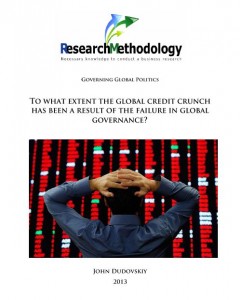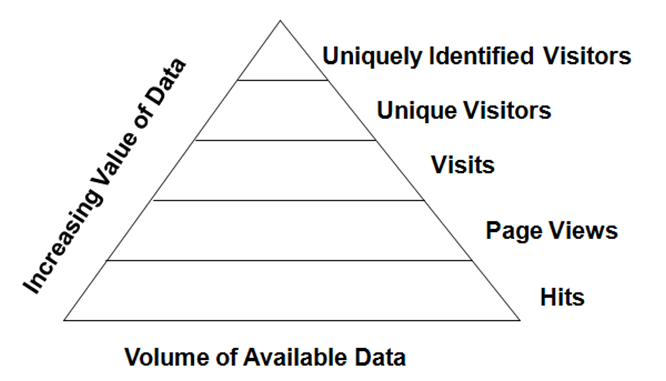E-Commerce

Information and communication technologies (ICT) have had tremendous impact virtually all industries and sectors, as well as, specific business businesses processes. The impact of ICT on businesses relate to the facilitation of communication with organisational stakeholders, serving as an effective sales channel, providing an effective platform for engaging in marketing and others. Literature review is a “systematic, explicit and reproducible method for identifying, evaluating and interpreting the existing body of recorded work produced by other scholars” (Khan, 2008, p.41). Importance of conducting literature review in this paper can be explained in a way that it allows to present the most notable data about various important aspects of ICT in tourism and hospitality so that this data can be referred to during the case study analysis. ICT in Tourism and Hospitality Sector Parsons and Oja (2013) mention online reservations systems as one of the greatest impacts of ICT on tourism and hospitality sector. Major travel companies such as Expedia, Orbitz, and Thomas Cook, as well as, medium and even small sized tourism and hospitality firms have online reservation functionalities on official company website. Online reservation capabilities provide substantial cost saving opportunities for businesses in tourism and hospitality sector that otherwise would have been spent on human resources making reservations in a manual manner. Moreover, according to Mihalic and Buhalis (2013), while the majority of businesses in tourism and hospitality sector have adopted various components of ICT to certain extent, there are substantial differences between businesses in terms of extent and nature of adoption of those components. In simple terms, Mihalic and Buhalis (2013) argue that some tourism and hospitality organisations have effectively included ICT to the sources of competitive advantage, whereas opportunities offered by ICT are yet to be used by others. Importance of ICT to Small Hospitality Companies…

Generally, two alternative approaches can be used for website evaluation: quantitative and qualitative. Quantitative approach, as the name suggests is closely associated with numbers and calculations such as the numbers of website visitors, visitor bounce rate, the numbers of countries the website is visited from etc. Qualitative approach, on the other hand, includes non-quantifiable criteria such as design, navigation, interactivity and others. Qualitative approach has been adopted for Tophams Hotel website evaluation, and accordingly, non-quantifiable elements have been selected as evaluation criteria. The rationale for the choice of qualitative approach relates to the fact that factors impacting website visits and visitor experiences are qualitative as well. This argument is supported by findings of the literature review provided above. The following table presents a set of website evaluation criteria selected to conduct Tophams Hotel website evaluation and briefly explains rationale for the choice of each criteria. Criteria Rationale for the choice of criteria First impression First impression has direct and significant impact on the visitor bounce rate on the website. Factors impacting first impression include download time of the website, design features and capabilities, presentation of credential validations etc. Navigation capabilities Nowadays website visitors expect advanced level of navigation capabilities and absence of navigation capabilities at this level is most likely to have negative implications on brand image. Quality of content Importance of usefulness and relevance of the content can not be disputed. The literature review found factors impacting content quality to include information being up-to-date, availability of the content in several languages, FAQs and others. Attractions Attractions are aimed at encouraging return visits to the website, and thus they play great role in achievement of website objectives. Ease of finding information This specific criterion can be marked as a critical success factor for any website and its importance is…
By John Dudovskiy
Category: E-Commerce

This paper critically analyses the extent at which a failure in global governance contributed to the recent global credit crunch. The paper starts with discussing the primary reasons of the credit crunch of 2007-2009, and its implications on the global economy. This is followed by analysis of the current state of global governance, and its impact on credit crunch. Moreover, the paper highlights potentials for avoiding credit crunch in the future through improving global governance practices. The global economic and financial crisis of 2007 – 2009 has shed a light in inefficiencies of the international financial system and the current pattern of the global governance. The current system of global financial governance has found to be mainly insufficient to predict and contains financial instability. The need for efficient global governance needs a shift to an improved balance between the two worlds of financial globalization i.e. private financial activity and public financial governance (Porter, 2009). The credit crunch reveals great challenges and threats to the developed economies as well as developing states. The global banking industry, which was by far the most profitable sector in 2006, is in much trouble and the risk that this poses to the real economy is thoughtful (Wade, 2008). The global financial crisis of 2007-triggered by the sub-prime mortgage crisis in the spring previously led to a significant decrease in production in autumn 2008, which has continued in 2009 and went on to produce the spring of 2009 to the present day effects, both social (rising unemployment decrease in disposable income, declining demand, social problems) and political (government changes, erosion of confidence citizens in the performance of governments and the political class), and thus increased the difficulties of public finances in developed countries causing in 2010 a series of crises (Nesvetailova, 2010). 1. Introduction 1 2.…

It is acknowledged by secondary data authors that online retailing in its various forms, including retailing of food and grocery products is considered to be a component of e-commerce. E-Commerce can be defined as “conducting business transactions – generally financial transactions – via communications technology” (Morley and Parker, 2010, p.431) Laudon and Traver (2009) inform that internet boom in general, and e-commerce in particular that has started towards the end of the last century had transformed the various aspects of lives of people significantly in a global scale. Authors offer different viewpoints about the nature of that affect but agree on the idea that “with the introduction of e-commerce, we have come to expect 24-hour delivery of products from across the world, and home delivery of groceries from the local Tesco at a time of our choosing” (Gustafsson, 2006, p.39) Hall (2008) mentions a survey conducted in 2008, which revealed that sixty-five percent of food companies were engaged in selling specialty food via internet. The following table illustrates the findings of the survey in a more detailed way: Internet Sales as Percent of Gross Sales Internet Sales as Percent of Total Sales in 2007 Internet Sales as Percent of Total Sales in 2008 Less than 10% 40.0 37.5 11-20% 10.0 10.0 21-30% 1.0 10.0 31-40% 2.0 2.5 41-50% 0.0 0.0 51-60% 2.5 0.0 More than 60% 2.5 2.5 No response 22.5 27.5 However, some authors (May, 2000, Kozami, 2002, Ashley, 2004, and others) dismiss the idea that purchasing food and grocery products through internet is an entirely new thing. They justify their stand by stating that “we should be suspicious of claims that internet provisioning is something entirely new. There are obvious continuities with existing telephone and television shopping, even if the service has become widespread and notionally democratized”…

The Pyramid Model of Web Analytics Data associates the increasing value of data with filtering hits to the site towards uniquely identified visitors. According to the Pyramid Model of Web Analytics Data an e-commerce web-site gets certain amount of hits (visits) associated with a certain numbers of web site page views. This data is perceived to be the most basic information and the level of its value is highly compromised from an organisational viewpoint. Pyramid Model of Web Analytics Data Further in the line of increasing value of data come the actual visits to the site and the proportion of unique visitors within overall visits. This information can be used by e-commerce business management to assist in decision making. In Pyramid Model of Web Analytics information about uniquely identified visitors is considered to be the most valuable set of data. Data at this level may include geographical locations of uniquely identified visitors, landing and exit pages on the e-commerce website, the duration of time spent on each specific web page and other important aspects of consumer behaviour. From this perspective, the Pyramid Model of Web Analytics represents an effective model in terms of explaining the value of data provided by web analytics tools.

Web analytics can be defined as “the analysis of qualitative and quantitative data from your website and the competition, to drive a continual improvement of the online experience that your customers, and potential customers have, which translates into your desired outcomes” (Kaushik, 2009, p.5). In simple terms, web analytics relates to assessment and analysis of internet data in order to understand the pattern of usage of a website. Starting from recently web analytics is also being referred to as data analytics to highlight the role of data and intelligence in analyses. Web analytics can be divided into two groups: onsite and offsite. Onsite web-analytics involve visitor and server data through page tagging, and other measures, whereas off-site web analytics relate to comments, site visibility, page view opportunities etc. References Kaushik, A. (2009) “Web Analytics 2.0: The Art of Online Accountability & Science of Customer Centricity” John Wiley & Sons

To meet the high expectations of on-time delivery while keeping the delivery costs low, e-grocers need to use fairly advanced optimization techniques and information technology systems. With every grocery retailer there is a flow of finished goods from its suppliers, then from the company to its customers. Grocery retailers also exchange and receive information which provides valuable data for the system. These include feedback from the marketplace in the form of customers’ orders, customer reaction, and information on needs and wants; flows of information within the company that provide data in the form of inventory schedules, production schedules and so on as well as orders from the company to outside suppliers’. From a standpoint the whole company and the market in which it operates can be deemed as a series of linkages and relationships, and the efficiency in which the company operates can be seen to depend on how well these connections work. Having a system that works smoothly at minimum cost, would possibly allow for the company performance to be high. However this is not always the case in practice where it is common to find bottlenecks and poor integration between different parts of this system, leading to disappointing results. There are various methods and systems that can be implemented by retailers and over the past years the big supermarkets tried to adopt centralised models but where quick to abandon them in the past decade once they realised they would struggle with being efficient. This excludes Ocado which remains at the other end of the spectrum. ‘Ocado maintains that its centralised model will prove more efficient than the supermarkets’ store-picking approach once it achieves a critical mass’. The drawback is that Ocado might incur some difficulties if its tries to implement the hub and spoke system for the entire…

The process of being able to buy and sell over the internet is known as electronic commerce. In the case of the food shopping online we have the business to the consumer (B2C) process. The ‘global figure for online sales of food and drinks is estimated between US$20 bn and US$30 bn’ (www.companiesandmarkets.com). The online grocery retailing markets currently dominated by the UK and the US estimated at 75% of the world total in 2009. On the other hand online and internet activities only make up 1.5% of the global retail grocery market. For main food shopping, various influences determine the actions of customers. These include travel choices which are likely to be influenced by having to carry heavy bags, as well as the closeness of the retail store. ‘According to Procter & Gamble, traditional in-store shoppers who pick, pack, and deliver their own products now save the industry approximately 13 percent of the total cost of sales’ For e-grocers, the more deliveries in a specified area, the lower the costs per delivery. But despite its impressive figures and growth, online retailing only accounts for 3% of sales of the total UK grocery sector, making it a niche channel in the broader context. (Mintel 2009) In addition, food and groceries remain far behind non-food items where online retailing market is concerned, with consumers using the internet most frequently for booking holidays, downloading music, as well as accommodation. The supermarket home delivery service was initially sparked in the late 1990s when Iceland (the frozen food retailer) launched its delivery only service where customers had to select the products in store, but a delivery van would then deliver the items.Icelandwas soon emulated by others on the industry: The likes of Tesco, Asda and Sainsbury’s began to offer online ordering and…
By John Dudovskiy
Category: E-Commerce

To be able to secure a customer, the need to understand the personal preferences and the decision making process of a customer is essential in addition to being able to link this to grocery e-shopping process. The concept then moves a step further with the company not just trying to market a product or service in store but convincing the customer that online shopping is not only available but is available as an option. This process allows the company to identify a unique selling point. Over the years grocery retailers have looked to create their individual selling points and incorporated a great deal of diversification to allow for some type of advantage. Tesco for example has responded and taken advantage of major changes in lifestyle patterns, and this is a key to its ongoing success. Tesco alone has generated more than two fifths of total sector sales capturing 12% of the sector. (Mintel 2009) In addition ‘Tesco as well as Asda have provided fantastic online offerings, making it easy for consumers to find and buy their groceries online,” said managing director of MyVoucherCodes.co.uk, Mark Pearson’. (http://www.utalkmarketing.com) Another contender in the retail market is Ocado which started trading in 2002 and is now one of Britain’s leading online grocers. As said in the afore-mentioned Ocado’s centralised system of distribution means it doesn’t need a network of stores to reach is customers. Ocado is the online grocery company that resells branded items, in addition to its own small range of own-brand goods and a wide selection of own-brand goods from the upmarket supermarket grocer, Waitrose. Ocado also has its green credential: Having its vans deliver the customers groceries generates less CO2 than walking to the local Tesco. It also collects and recycles customers’ unwanted plastic bags, sources biodiesel for fuel (vegetable fats…

E-Shopping SWOT Analysis Strengths A company’s ability to compete in its chosen industry highlights the level of success that it can achieve. Ocado is a clear example of how an organisation can create its own niche by specialising in a fraction of the actual industry therefore working against the usual business model of supermarkets. Although existing companies might already have an advantage with infrastructure a company’s strength will become evident if it is able to implement the e-commerce principle to expand its customer base whether it be on a local or global scale without expending too much time or capital that leads to its downfall. For an existing company, having a standard brick and mortar supermarket although deemed as an initial advantage, would not necessarily be the same for a new entrant. Having low overhead and start up costs for an e-shopping retail business would be more beneficial. These benefits though can extend to the consumer. Having an online business in this period is more of a necessity and consequently would allow a company better levels of communication which is achieved at every stage of the purchase especially through the use of e-mail. Weaknesses A customer in this market has no way of identifying the size of the company via the internet and consequently cannot identify the capabilities of the chosen company. Consequently a customer demands the same level of service from a new small online business as it would from a retail giant. A new company also has the task of identifying and understanding consumer behaviour, customer values and expectations therefore a new entrant is left with the task of designing and structuring a website that assists the consumer in locating the exact product that is desired as well as allows it to assert its position in a…
